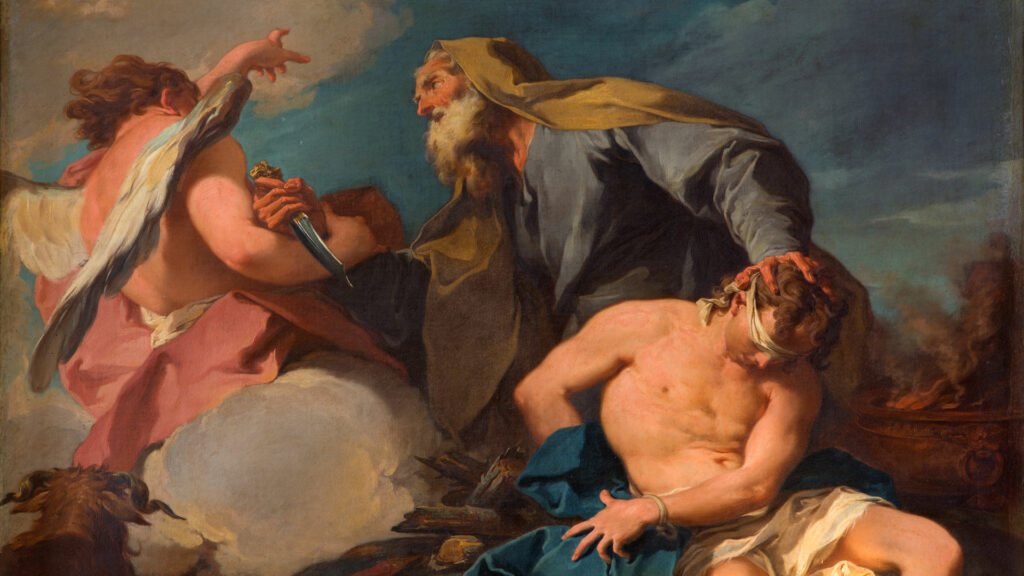On New Year’s Day, I encouraged us to earnestly seek Christ in the Scriptures and thereby behold the glory of God. Last week, our Elder Jeff McArthur passionately expounded the beauty of Christ’s person, focusing on Christ’s humility. Now, I want to help us see Jesus in Genesis 22.

Reading Genesis 22 requires bearing in mind all that God has done for Abraham to this point: he called Abraham from his homeland into a foreign country and promised unimaginable blessings (Gen 12); he gave Abraham bountiful possessions (Gen 13); he made a covenant with Abraham, promising that he would receive land and be made into a great nation through a son (Gen 15); he recapitulated the covenant and gave Abraham the sign of circumcision (Gen 17); he appeared to Abraham visibly (Gen 18); and he gave Abraham the promised and long-awaited son through whom all of his promises would come to fruition (Gen 21).
Abraham finally has the son for whom he has waited. God has proven himself faithful. But then, God commands Abraham to sacrifice this son, Isaac (v. 2). The command itself recognizes Abraham’s affection for his son: “take your son, your only son Isaac, whom you love…” (v. 2). This is heart-wrenching. But Abraham obeys, and “on the third day” (v. 4) arrives at the place of sacrifice. Leaving his servants, he “took the wood of the burnt offering and laid it on Isaac his son” (v. 6). They are on their way up Mount Moriah when Isaac wonders aloud why they have not brought a sacrificial lamb. Abraham, trusting God, responds: “God will provide for himself the lamb for a burnt offering” (v. 8). They arrive at the place of sacrifice and build an altar. Still, there is no lamb, so Abraham binds Isaac and places him on the altar. Just before he slaughters his son, the angel of the LORD appears: “Abraham, Abraham!” (v. 11). Abraham lifts his eyes and sees a ram caught in a thicket nearby. He unbinds Isaac, helps him off the altar, and offers the ram instead, in worship of the God who provides.
Through his obedience Abraham made visible the faith by which he was already counted righteous (Gen 15:6). As a result, the angel of the LORD commended him:
By myself I have sworn, declares the LORD, because you have done this and have not withheld your son, your only son, I will surely bless you, and I will surely multiply your offspring as the stars of heaven and as the sand that is on the seashore. And your offspring shall possess the gate of his enemies, and in your offspring shall all the nations of the earth be blessed, because you have obeyed my voice.
Genesis 15:16-18
These things, friends, were “written for our instruction” (Rom 15:4). For in these events God intended to prefigure the final Son through whom all of his promises would be fulfilled (2 Cor 1:20). The Father sent his Son, his only beloved Son, as a sacrificial offering for the sins of his people (v. 2; cf. Heb 10:12-14). Wood was laid on the Son’s back, not for a burnt offering but for a Roman cross (v. 6; cf. Jn 19:17). God did “provide for himself the lamb for a burnt offering” (v. 8), not finally in the ram who substituted for Isaac, but in “the Lamb of God, who takes away the sins of the world” (Jn 1:29). While Abraham’s son was spared, the Father “did not spare his own Son but gave him up for us all” (Rom 8:32). Just as “on the third day” (v. 4) Abraham received Isaac back from the dead (Heb 11:19), so on the third day the Father raised his Son from the dead as “the firstfruits” of all who believe (1 Cor 15:23).
The events recounted in Genesis 22 underline the love of the Father for his Son, the costliness of the Son’s offering to the Father, and God’s immeasurable grace in redeeming his people. They present Jesus Christ himself to Abraham and to us. After all, the angel of the LORD tells Abraham that “in your offspring shall all the nations of the earth be blessed” (v. 18). This “offspring” is not many but one – and Paul tells us that he is not Isaac, but Christ himself (Gal 3:16). Praise be to God for his inexpressible wisdom!
Three times in the Abraham cycle (and twice in our text) Abraham is said to have “lifted up his eyes.” In lifting his eyes, he beholds (1) three men (the LORD and his angels) who visited him before the destruction of Sodom and Gomorrah (Gen 18:2); (2) the place of sacrifice (Gen 22:4); and (3) the ram caught in the thicket (Gen 22:13). Each time, Abraham is not merely raising the gaze of his physical eyes. He is lifting the gaze of his faith to the horizon of God’s redemptive plan, to Jesus himself. Who were the three men whom he saw? God himself (the Father), and the two sent by God to rescue Lot and his family from judgment (the Son and the Spirit). What was the place he saw? It was the place of sacrifice where Jesus would offer himself to the Father. What was the ram he saw? The substitute for his son’s life, an image of Jesus.Abraham “lifted up his eyes” to see Christ. Jesus tells us as much: “Your father Abraham rejoiced that he would see my day. He saw it and was glad” (Jn 8:56).
Let us likewise lift our eyes, especially as we read the Scriptures, to see our Savior and be transformed by that glorious vision.


